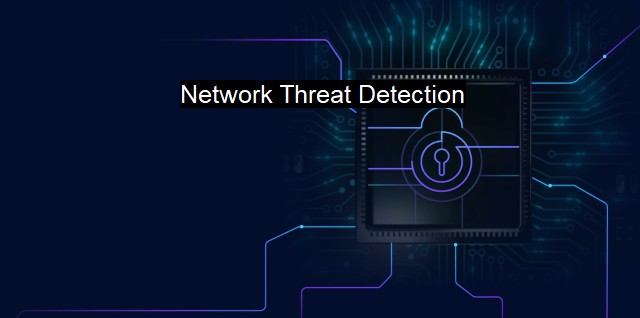What is Network Threat Detection?
The Importance of Network Threat Detection in the Fight Against Cybercrime: Safeguarding Your Business Against Advanced Threats
Network Threat Detection is a critical aspect of cybersecurity and antivirus protection. It encompasses the methodology and technology used to protect a computer network from potential threats, vulnerabilities, or attacks which aim to breach network security and confidentiality. With dependency on the internet and digital platforms for our day-to-day activities and operations increasing at an unprecedented level, ensuring an undeterred and integrated security approach has gained utmost necessity.To understand what Network Threat Detection is, it is important to first recognize what constitutes a network threat. A network threat may consist of a variety of forms, ranging from viruses, malware, spyware, trojans, and ransomware to sophisticated hacking strategies such as Denial-of-Service (DoS) attacks, phishing exploits, and even advanced persistent threats (APTs). Be it individual users or multinational corporations, network threats could cause irreparable damage to the concerned entities. Loss of critical data, unauthorized access to sensitive information, disruption of services, penetration of protected network zones, and compromise of system integrity are some of the most deleterious effects of network threats. These could lead not only to monetary loss, but also unrecoverable damage to reputation and functionality.
Now that we have concisely understood what a network threat is, let's delve into the essence of Network Threat Detection. Network Threat Detection implies the identification of a potential threat or existing vulnerabilities that take refuge within networks. It employs an array of techniques to monitor internet traffic in real-time, analyze network behavior, inspect data packets, and notify the respective entities about any anomalous or suspicious activities noticed.
Let's scrutinize further. Network Threat Detection straddles across several spheres: antivirus software, firewalls, Intrusion Detection Systems (IDS), and Intrusion Prevention Systems (IPS). Antivirus software essentially scans the systems for existing threats born out of viruses, worms, malware, or spyware. Firewalls act as protectors, allowing only legitimate and acceptable internet traffic to flow through the network, thereby averting potentially harmful connections and restricting unauthorized access. IDS monitors traffic passively, identifying and alerting about possible threats. IPS takes a proactive stance, not only recognizing but negating efforts of network threats.
Recent advancements have foregrounded network security analytics in the process of Network Threat Detection, making it more effective and efficient. By deploying deep learning techniques, machine learning models, and artificial intelligence, networking professionals and cybersecurity experts aim to design systems that can predict, locate, invalidate, and rectify network threats with high accuracy and efficiency.
Network Threat Detection acquires enormous importance in cyberspace—corporate networks of several companies deal with an overwhelming number of transactions, process substantial databases, and expose sensitive information online. Thus, maintaining ceramic-tight cybersecurity has become an unavoidable necessity. A lapse could translate to catastrophic consequences. At the individual level too, with more and more personal data being uploaded online—ranging from information regarding one's location, week schedule, photographs, payment methods, and vital data-related family, health, education, or work—securing one's digital footprint predisposes as a paramount necessity.
Network Threat Detection forms the crux of safeguarding our digital world. Bear in mind that security is not something that's 'installed', but an ongoing process. Ensuring security is as vital as creating a network itself. Robust and effective deterrence methods, continuous monitoring of network activities, timely updates of security systems, and building a rigid resiliency towards threats characterize an efficient Network Threat Detection system—aiming for a safe, protected, and trustworthy world in the age of the Internet. As malicious threats evolve, so do our systems and strategies, persistently countering, mitigating, and neutralizing those attempted intrusions, protecting the integrity of our networks.

Network Threat Detection FAQs
What is network threat detection?
Network threat detection is a cybersecurity technique that involves identifying and monitoring potential threats or attacks to a network in order to prevent and mitigate them. It involves using specialized software and tools to scan the network for suspicious activity and to alert security personnel of any potential threats.What are some common types of network threats that can be detected?
Some common network threats that can be detected using network threat detection techniques include malware, viruses, ransomware, phishing attacks, DDoS attacks, and insider threats.What are some benefits of using network threat detection?
Using network threat detection can help organizations to identify and respond to potential cyber attacks more quickly and effectively. It can help to reduce the risk of data breaches and other security incidents, and can help to protect the sensitive information of both the organization and its customers. Additionally, network threat detection can help to comply with regulatory requirements and industry best practices for cybersecurity.How can I implement network threat detection in my organization?
Implementing network threat detection typically involves selecting and configuring specialized software and tools that can monitor the network for potential threats. This may include firewalls, intrusion detection systems, and antivirus software. Additionally, it is important to establish clear security policies and procedures, and to train employees on best practices for cybersecurity. Some organizations may choose to work with a cybersecurity consulting firm or Managed Security Service Provider (MSSP) to help with the implementation and management of network threat detection.| | A | | | B | | | C | | | D | | | E | | | F | | | G | | | H | | | I | | | J | | | K | | | L | | | M | |
| | N | | | O | | | P | | | Q | | | R | | | S | | | T | | | U | | | V | | | W | | | X | | | Y | | | Z | |
| | 1 | | | 2 | | | 3 | | | 4 | | | 7 | | | 8 | | |||||||